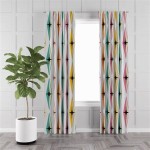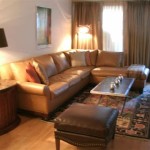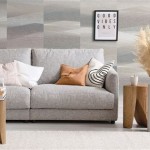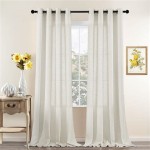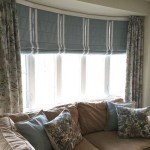How to Fill a Large Living Room: A Comprehensive Guide
A generously sized living room presents a unique set of design challenges. While the abundance of space offers creative freedom, it can also lead to a feeling of emptiness or a lack of visual cohesion. Effectively furnishing and decorating a large living room requires careful planning and a strategic approach to ensure a comfortable, inviting, and aesthetically pleasing environment. This guide explores key considerations and practical tips for transforming a vast living area into a well-defined and functional space.
Define Zones and Create Functional Areas
One of the most crucial steps in filling a large living room is to break down the expansive space into distinct zones, each serving a specific purpose. This not only adds visual interest but also enhances the room's functionality, making it more versatile and accommodating to various activities. Consider the needs and lifestyle of the occupants when defining these zones. Common zones include a seating area for conversation and relaxation, a media entertainment zone, a reading nook, or even a dedicated play area for children.
To visually separate these zones, utilize area rugs. A large rug can anchor a seating area, clearly delineating it from other parts of the room. Different rug textures and patterns can further emphasize the distinction between zones. For instance, a plush rug might define a cozy reading nook, while a more durable rug is suitable for a high-traffic area near the entrance. Furniture placement plays a crucial role in defining zones. Arrange sofas, chairs, and tables to create distinct conversational groupings. Back-to-back sofas or strategically placed consoles can also act as visual barriers, subtly separating one zone from another without completely isolating them.
Lighting is another powerful tool for defining zones. Consider the function of each area when planning lighting. A reading nook might benefit from a floor lamp or a table lamp, while the main seating area could feature a combination of ambient and task lighting. Use different types of lighting fixtures to further emphasize the distinction between zones. For example, a chandelier might be appropriate for a formal seating area, while recessed lighting is better suited for a more casual media zone.
Screens, partitions, or low bookcases can add visual separation while maintaining a sense of openness. These elements allow light to flow through the space, preventing the room from feeling closed off. They can also serve as decorative elements, adding texture and visual interest to the room. Consider using plants to soften the boundaries between zones. Tall potted plants can create a natural screen, adding a touch of greenery and life to the space. Hanging plants can also be used to define zones, particularly in areas with high ceilings.
Scale Up Your Furniture and Decor
In a large living room, standard-sized furniture can appear dwarfed and insignificant. Scaling up the furniture is essential to create a sense of proportion and visual balance. Opt for larger sofas, substantial armchairs, and generously sized coffee tables that can fill the space without feeling crowded. When selecting furniture, consider the overall dimensions of the room and the size of the zones you have defined. Choose pieces that are appropriately scaled to the space, avoiding furniture that seems too small or too large for the area.
An oversized sectional sofa can be a great investment for a large living room, providing ample seating for family and guests. Alternatively, consider a combination of sofas and armchairs to create a more flexible seating arrangement. Large artwork, such as oversized paintings or sculptures, can have a significant impact on a large living room. They can fill empty wall space and add a focal point to the room. Choose artwork that complements the room's color scheme and overall style. Mirrors are another excellent way to fill wall space and create the illusion of more space. A large mirror can reflect light and make the room feel brighter and more open.
Large rugs are essential for anchoring furniture groupings and defining zones. Choose a rug that is large enough to accommodate all the furniture in the seating area, with at least the front legs of the sofas and chairs resting on the rug. Oversized lighting fixtures, such as chandeliers or pendant lights, can add drama and visual interest to a large living room. They can also help to fill vertical space and draw the eye upwards. Consider using a combination of floor lamps, table lamps, and overhead lighting to create a well-illuminated and inviting space.
Think about the height of your furniture and decor. Tall bookcases or shelving units can help to fill vertical space and prevent the room from feeling empty. Consider adding architectural details, such as crown molding or wainscoting, to add visual interest and dimension to the walls. Window treatments can also have a significant impact on the overall look and feel of a large living room. Choose window treatments that are appropriately scaled to the windows and that complement the room's style.
Embrace Bold Colors and Textures
A large living room provides an excellent opportunity to experiment with bolder colors and textures. Neutral colors can sometimes feel cold and sterile in a large space, so consider incorporating richer hues and more tactile materials to add warmth and personality. Deep blues, greens, and grays can create a sense of sophistication and depth, while warmer tones like rust, ochre, and terracotta can add a feeling of coziness and comfort. Coordinate colors with the overall aesthetic of the living space.
Think about the lighting conditions in the room when choosing colors. Darker colors can make a room feel smaller, so they are best used in rooms with plenty of natural light. Lighter colors can make a room feel brighter and more spacious. Incorporate textures through fabrics, rugs, and accessories. Velvet, linen, and wool can add a luxurious feel to the room, while woven baskets and natural materials can add a touch of rustic charm. Layer different textures to create a rich and inviting space.
Introduce patterns through rugs, wallpaper, or cushions. A bold pattern can add visual interest and prevent the room from feeling monotonous. Choose patterns that complement the room's color scheme and overall style. Use artwork to add pops of color and visual interest. Choose artwork that is appropriately scaled to the space and that complements the room's style. Consider using accent walls to add a focal point to the room. Paint one wall a bold color or use wallpaper to create a dramatic effect. Incorporate metallic accents through lighting fixtures, accessories, or furniture. Metallic accents can add a touch of glamour and sophistication to the room.
Incorporate natural elements, such as plants, wood, and stone, to add warmth and texture to the room. Plants can add a touch of life and greenery, while wood and stone can add a sense of grounding and stability. The use of different materials, such as metal, glass, and wood, can create a sense of visual interest and prevent the room from feeling flat. Experimenting with different finishes, such as matte, glossy, and textured finishes, can add depth and dimension to the room.

10 Tips For Styling Large Living Rooms Other Awkward Spaces The Inspired Room

10 Tips For Styling Large Living Rooms Other Awkward Spaces The Inspired Room

13 Tricks To Decorating A Large Living Room

10 Tips For Styling Large Living Rooms Other Awkward Spaces The Inspired Room

9 Tips To Help Decorate Large Spaces Real Estate Hsa

Reader Question How To Arrange A Large Living Room Stauffer Design Co An Interior Company

10 Tips For Styling Large Living Rooms Other Awkward Spaces The Inspired Room

How To Decorate A Large Living Room Peninsula

How To Decorate A Big Blank Wall Sanctuary Home Decor

10 Tips For Styling Large Living Rooms Other Awkward Spaces The Inspired Room

